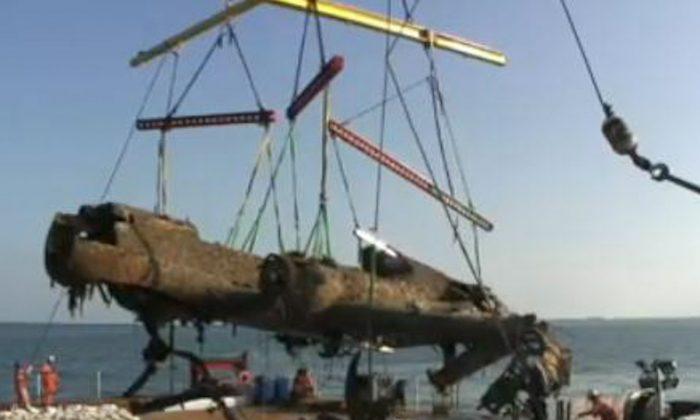German WWII bomber: The delicate operation of lifting a Dornier 17—the last remaining example of its kind—from its watery bed on June 10 was a success. The German WWII bomber plane emerged from the water with the helped of equipment attached to the strongest points of its frame.
It went down during the Battle of Britain in 1940 off the coast of Kent near Dover, southeast England.
As the bomber is prepared for transport to the Royal Air Force Museum’s conservation center in Cosford, about 25 miles outside Birmingham in central England, the museum’s staff remember the deaths associated with the aircraft.
One of the three aircrew in the recovered Dornier 17, Sgt. Helmut Reinhardt, died from injuries sustained in the crash, according to the museum’s website. The other two survived the war as prisoners of war in Canadian camps.
“In honoring a fallen German airman, we commemorate all those young men from across the world who died in the service of their country,” said Peter Dye, director general of the museum, according to a posting on the museum’s website.
Alex Medhurst, the museum’s general manager laid a wreath on behalf of his staff at the Cannock Chase German military cemetery in Staffordshire, England, on June 11.
Recovery
The salvage team from the dive company SeaTech, directed by the museum, had a short window around 3:30–6 p.m. local time on Monday, June 10, to recover the aircraft with low winds and slack water tides. Bad weather had thwarted previous attempts.
A salvage barge cable snagged on a propeller, nearly postponing Monday’s attempt. The museum has spent more than 600,000 pounds (about $930,000) on the salvage, according to the BBC.
After 73 years under about 50 feet of water, the Dornier 17 is in relatively good shape. The tires are still inflated, noted BBC reporter Nick Higham from aboard the salvage barge.





